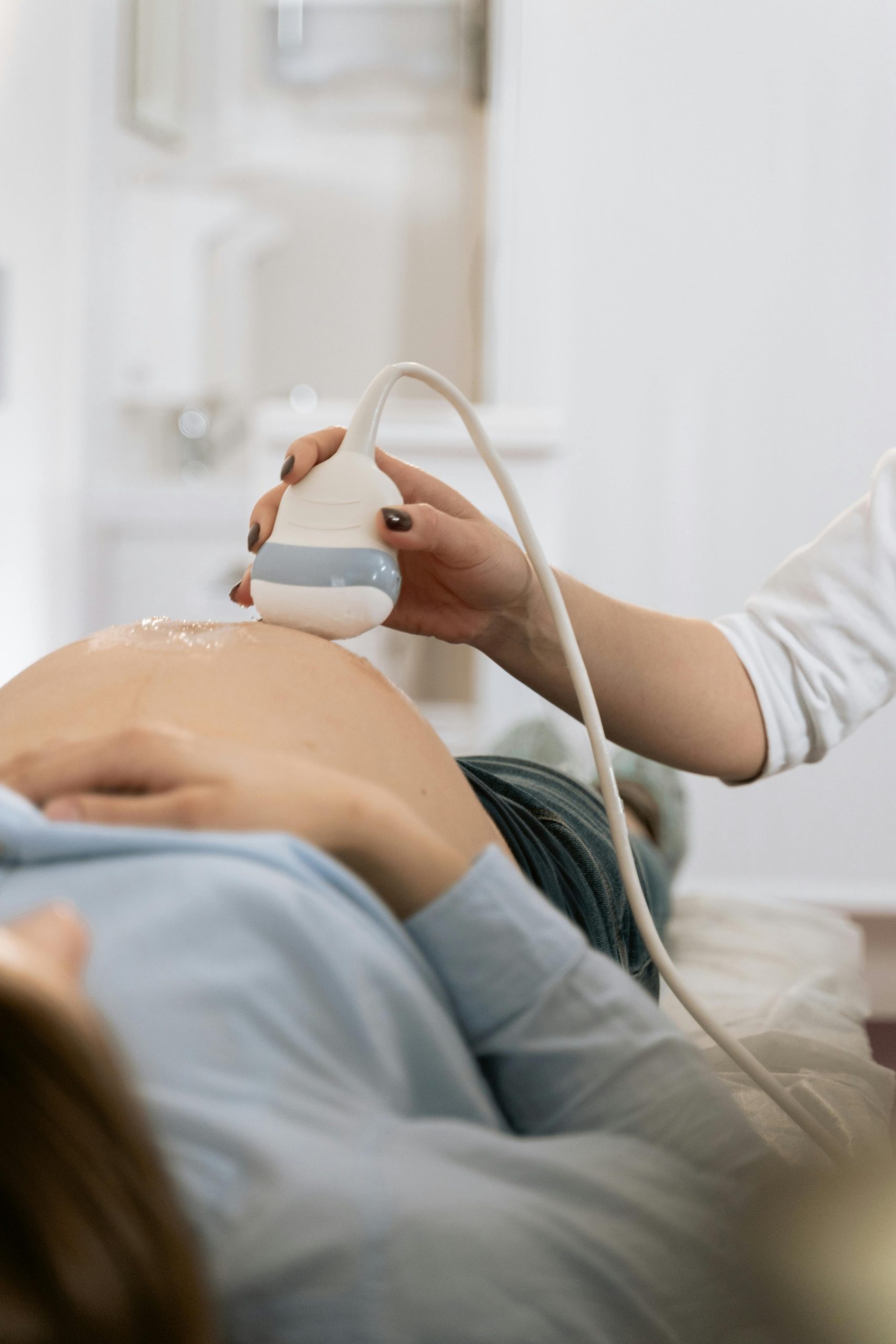
Sono-Breech
The Sono-breech study is a multi-centre study taking place in at least 13 hospitals across the UK, aiming to determine the diagnostic accuracy of handheld ultrasound at 36-weeks of gestation to determine fetal presentation.
Background
We want to find out if midwives can accurately identify a baby’s position before it is born using a small handheld ultrasound device. At a late pregnancy check, midwives feel a woman/birthing person’s* abdomen using their hands (abdominal palpation) for baby’s position, but up to 40% of breech (bottom down) babies are missed by palpation alone.
Being specific about the baby’s position is particularly important so that plans for safe delivery can be made. Breech babies are at higher risk of injury during normal birth than cephalic (head down) babies. Emergency births in undiagnosed breech are riskier for baby and mother, so determining which way the baby is positioned is important to provide women with the information they need to make an informed choice about their care.
An alternative to abdominal palpation to determine the baby’s position is by using ultrasound scanning, which can more accurately detect whether a baby is breech or cephalic. Conventional ultrasound scans are usually undertaken in a hospital by specialist sonographers, require a large room and air conditioning. Point of Care ultrasound (PoCUS) with handheld devices have become popular in some areas of diagnostic imaging. This new technology is small, portable, and quick to use in any setting. If baby is confirmed to be breech, women may have the option of having a breech baby turned to head-down, or they may choose a planned Caesarean delivery or vaginal breech birth.
To determine if PoCUS should be introduced as everyday practice in the NHS, we need to be sure that it is accurate, cost effective, and acceptable to women and midwives. To do this we will compare PoCUS to the ‘gold standard’ conventional ultrasound. There is always a risk of unintended consequences of introducing a new technology, for example over intervention or unnecessary checks and we will be looking out for all of these. Furthermore, midwives report a desire to learn to scan for a baby’s position in order to improve their practice and professional development.
*The terms woman/women are used consistently throughout this website pertaining to the primary person receiving care and giving birth. All birthing people are acknowledged, and gender equality is assumed throughout to ensure respect for the unique psychological, physiological, and social needs of each individual.

